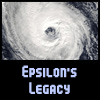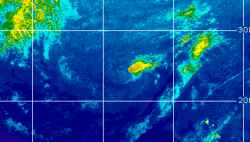cieldumort
Moderator

Reged:
Posts: 2497
Loc: Austin, Tx
|
 Re: Tropical Storm Barry forms in Gulf of Mexico
Re: Tropical Storm Barry forms in Gulf of Mexico
Thu Jul 11 2019 04:42 PM
|
|
|
Rare Day 3 HIGH RISK has been issued by WPC. Significant, life-threatening flooding is likely, and extreme, record-setting flooding is possible.
The only other Day-3 High Risks WPC has issued were for Harvey (2017) and Florence (2018).
Quote:
Excessive Rainfall Discussion
NWS Weather Prediction Center College Park MD
427 PM EDT Thu Jul 11 2019
Day 3
Valid 12Z Sat Jul 13 2019 - 12Z Sun Jul 14 2019
...THERE IS A HIGH RISK OF EXCESSIVE RAINFALL SATURDAY AND
SATURDAY NIGHT OVER EASTERN LOUISIANA AND FAR SOUTHWEST
MISSISSIPPI. THIS INCLUDES NEW ORLEANS AND BATON ROUGE...
...Central Gulf Coast and Lower Mississippi Valley...
Scenarios involving Barry become especially concerning on Saturday
and Saturday night. Significant flooding and life-threatening
flash flooding are likely across eastern Louisiana and southwest
Mississippi. The official NHC track, supported especially by
recent ECMWF and NAM runs, will bring a hurricane or strong
tropical storm slowly inland, producing widespread heavy tropical
rainfall. The worst case scenario, then, which is depicted in
multiple ECMWF and NAM runs, would be for a persistent band or
bands of convective rainfall to form and then train from
south-southwest to north-northeast within a broadly convergent
inflow region off the Gulf. With a slow cyclone track and broadly
available moist and unstable airmass to the south, there is
potential several hours training convection, producing high-end
rainfall amounts. The 12Z NAM CONUS Nest, for instance, only runs
out to 00Z Sunday, but produces over 10 inches of rain in some
places over just a 6 hour period ending at 00Z. The NAM and CONUS
Nest may be a bit fast. We would expect the threat to worsen
during the overnight hours leading into Sunday morning. But what
is concerning is that when removing placement differences, and
just viewing the intensity of the storm total rainfall, we are
seeing broad swaths of 20-plus inches of rain in the ECMWF, NAM,
Canadian, and GFS. The 06Z NAM even produced a 30 inch maximum in
southwest Louisiana. If this banded scenario sets up, it easily
could shift somewhat to the east or west. But based on our best
available information at this time, we are depicting the maximum
west of New Orleans and east of Lake Charles, placing Lafayette
and Baton Rouge in the area of greatest threat. In crafting the
associated QPF, we also expected that the heaviest amounts may
tend to prefer areas near and south of Interstate 10 to find the
unstable airmass.
This scenario is not quite as certain as other storms of recent
memory like Florence last year. Barry has not yet become very well
organized. But we have seen in numerous examples, including the
unnamed system that struck Louisiana in August 2016, that when the
global models unanimously begin depicting these high-end rainfall
amounts they are usually correct in forecasting a strongly
anomalous event with potential to produce substantial impacts. For
now we have trended the WPC QPF up to indicate areal average 10 to
20 inch amounts, with isolated 25 inch amounts, and with much of
the bulk of this occurring on Day 3.
Related Flhurricane links:
Unnamed Louisiana Low of 2016
Florence Lounge (2008)
|
|



 Flat
Flat




